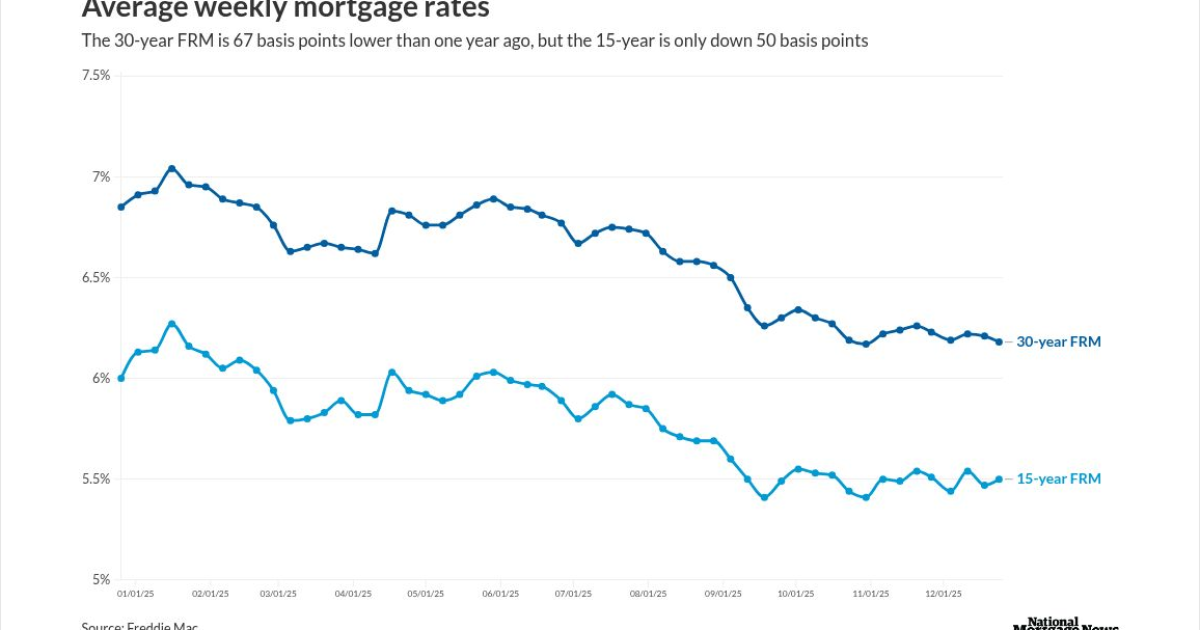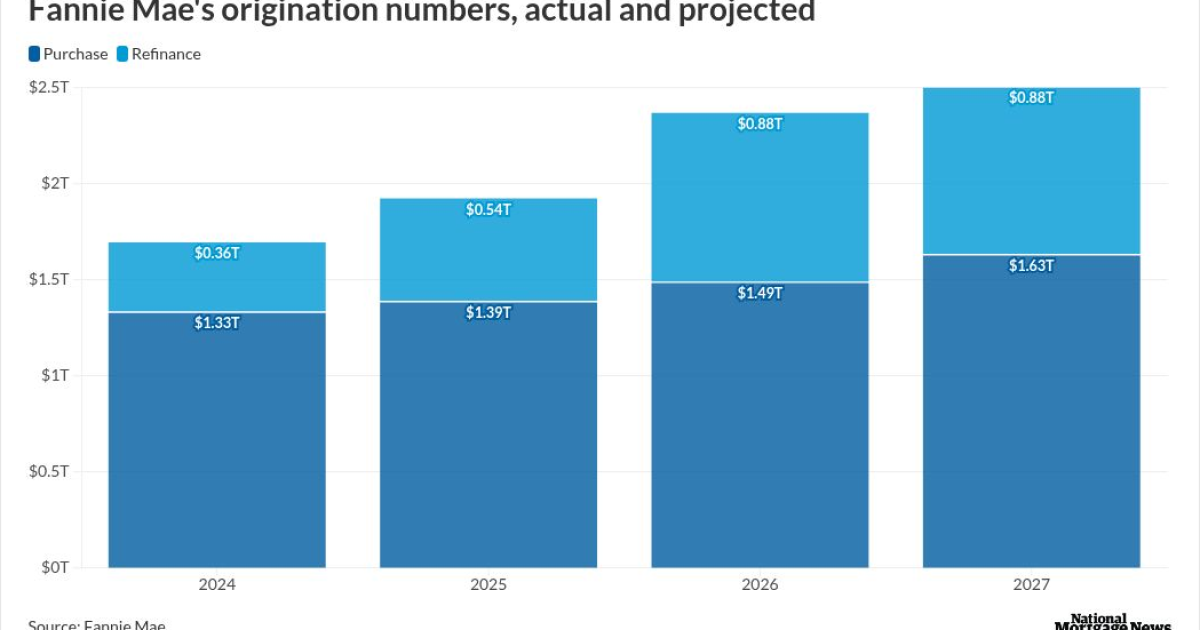
Fannie Mae economists
However, that will not translate to increased originations, as they also cut their volume forecast for both 2024 and 2025 from what they predicted last month.
Fannie's June forecast is also predicated on weaker gross domestic product growth than previously anticipated, as well as only
"The economy appears to be slowing, and recent readings offer hope that inflation is cooling after progress on that front stalled in the first quarter — a trend that will likely need to be sustained for the Fed to feel comfortable cutting rates," said Doug Duncan, Fannie Mae's chief economist, in a press release.
"Unfortunately, we're still
For the full year, Fannie Mae expects the 30-year FRM to average 6.8%, including falling to 6.8% for the third quarter and 6.7% in the fourth quarter. In May's forecast, Duncan forecast rates averaging 7% both for all of 2024 and just for the fourth quarter, after reaching 7.1% in both the second and third quarters.
June's outlook has the 30-year dropping to 6.3% by the fourth quarter of next year, with an average of 6.5% for all of 2025. This compares with the May outlook's prediction of 6.6% in the fourth quarter and 6.7% for the full year.
"Interest rates remain volatile, particularly given changes to Fed policy expectations, which adds risk to our outlook," the blog post accompanying the forecast said. "Following the completion of our start-of-the-month interest rate forecast and as of this writing, 10-year Treasury rates have decreased approximately 25 basis points following the May [Consumer Price Index] release, leading to some downside risk to our current baseline mortgage rate forecast."
Although the lower rate outlook led Fannie Mae to raise its forecast from last month for refinance originations for the next two years, that was outweighed by its cut in purchase activity.
It dropped its total home sales forecast to 4.82 million from 4.89 million.
The June outlook predicts the mortgage industry will produce $1.714 trillion in mortgages this year, up from an estimate of $1.47 trillion for 2023. This compared with May's forecast of $1.73 trillion.
It calls for $372 billion of refinance activity, up from the prediction in May of $368 billion. On the purchase side, the June forecast of $1.342 trillion, compared with May's $1.363 trillion. In 2023, the industry did $1.222 trillion of purchase originations.
During 2025, Fannie Mae looks for the mortgage industry to produce $2.068 trillion, with $1.525 trillion in purchase and refinancings making up $544 billion.
That compares with the May forecast for $2.076 trillion, made up of $1.537 trillion in purchase volume and $539 billion of refis.
Freddie Mac also issued its latest economic forecast; unlike other prognosticators, it does not disclose specific volume figures. Its May forecast called for
"As we anticipate a moderation in home sales, high prices, and a flat cash share of purchases, we expect purchase origination to be slightly higher in 2024 than in 2023," the June 20 blog post from the Freddie Mac economics team, headed by Chief Economist Sam Khater said. "With mortgage rates above 7%, refinance activity is expected to be minimal."
On that same day, it released
"However, if interest rates drop below 6.5%, refinance activity could see some uptick, as millions of borrowers still have rates above 6.5%," Freddie Mac said. "Nevertheless, given persistent inflation, achieving rates below 6.5% is challenging."



